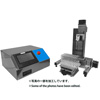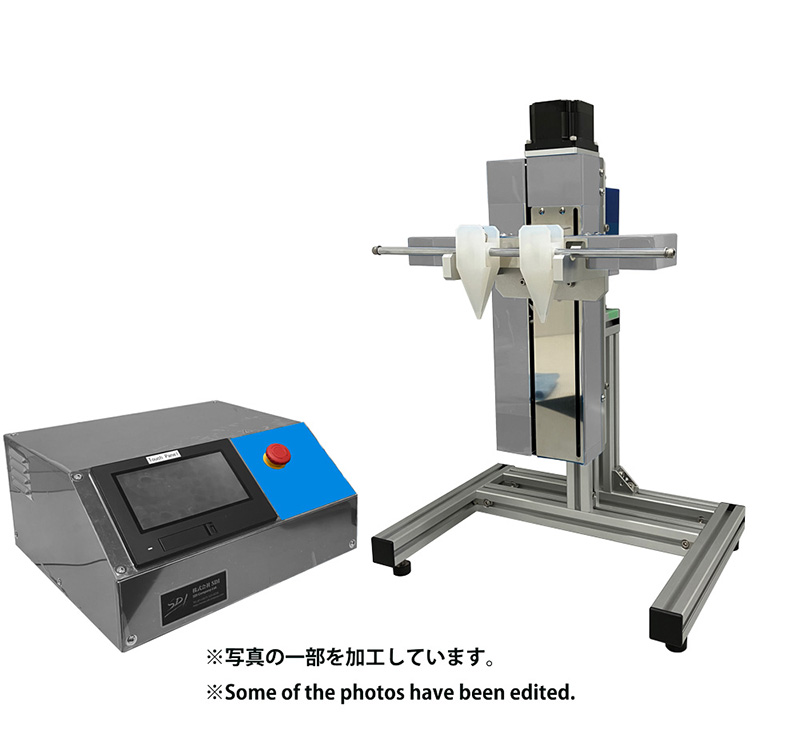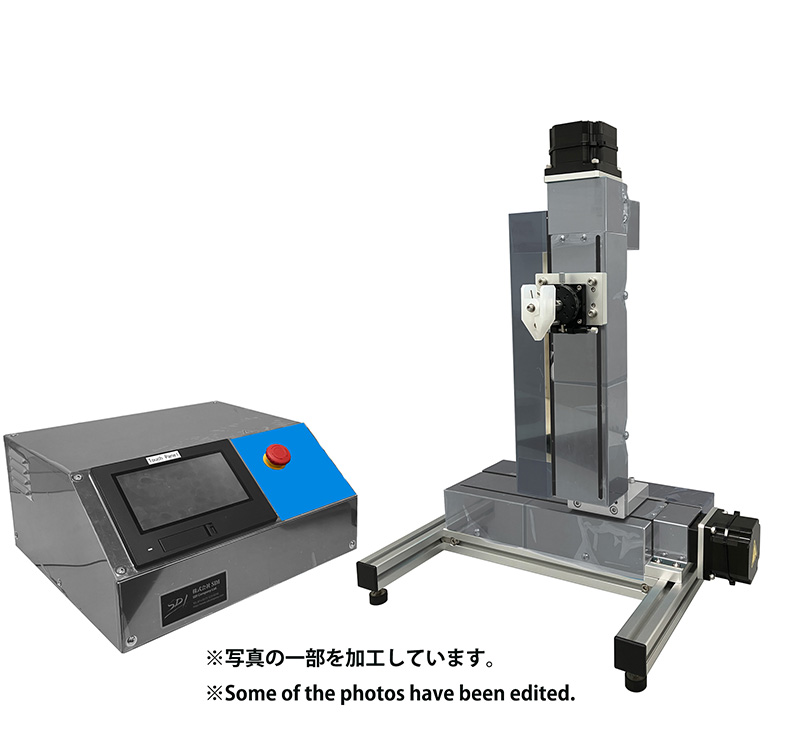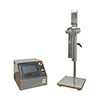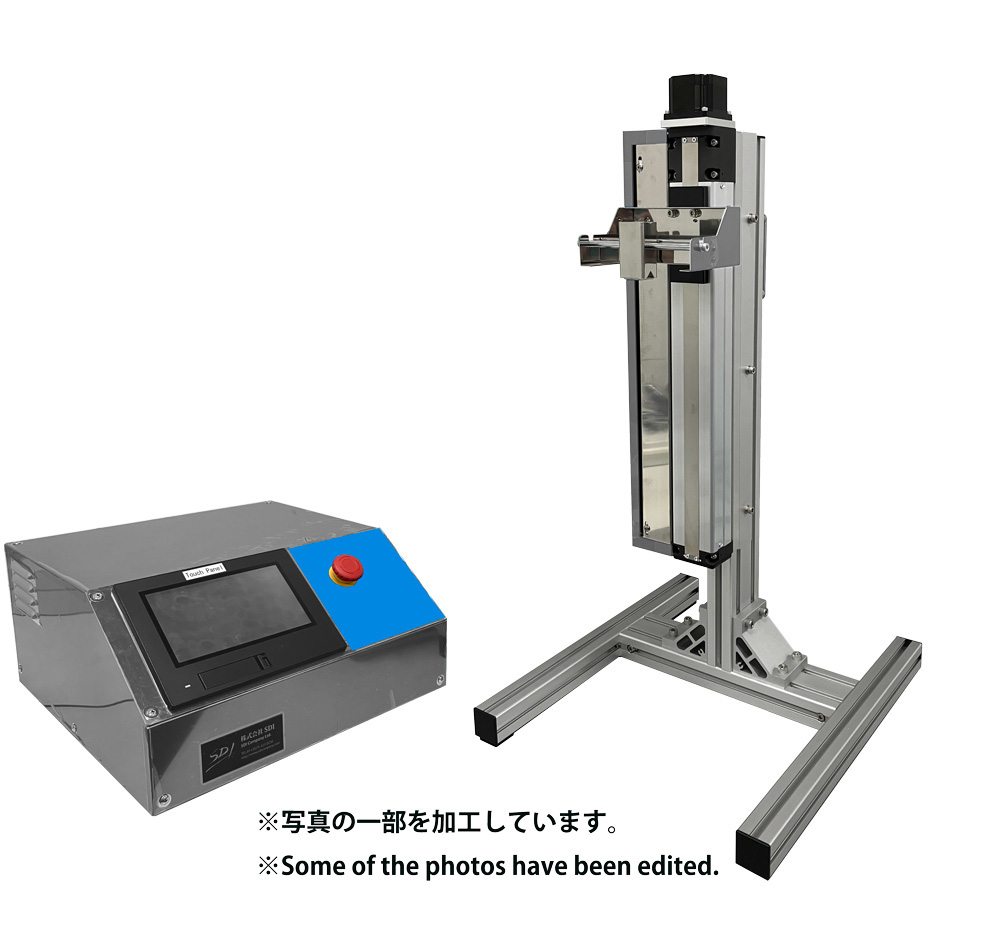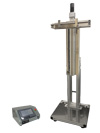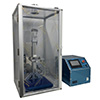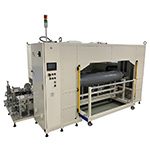Machine Translated by Google
Coating of fine particles onto foam metal using a nano-dip coater
1.Introduction
By uniformly coating the surfaces and pore surfaces of porous materials such as metal foams [1, 2] with fine particles, it becomes possible to develop highly functional electrodes, catalysts, filters, sensors, etc. at low cost. There are several methods for producing crystalline films, including natural precipitation, spin coating, capillary method, electrophoresis method, pulling method, and solution flow method [3-6]. In particular, the pulling method is considered to be simpler and cheaper than other methods, but problems and issues have been pointed out, such as uneven film thickness due to fluctuations in the pulling speed and slow pulling speed. In response to this, we have developed the Nano Dip Coater ND-0407, which has an ultra-low speed motor in its drive section and enables constant pulling at a speed of the order of nm/s. Here, we attempted to coat a three-dimensional base material with fine particles by pulling up a metal foam immersed in a dispersion solution of fine particles using a nano dip coater.2. Experimental method
A foam metal (Mitsubishi Materials Corporation, SUS 316L and Ni) base material was immersed in a solution containing fine particles, and then using an experimental dip coater sold by our company (product name: Nano Dip Coater, ND-0407), it was pulled vertically upward at a slow and constant speed, and the dispersed fine particles were coated onto the surface of the base material. SEM photographs of this sample were observed using a scanning electron microscope (JEOL Ltd., JSM-6060).3. Results and discussion
3.1 Coating of polystyrene particles on SUS 316L metal foamA solution was prepared by uniformly dispersing polystyrene particles (Moritex Corp.) with a particle size of 200 nm in water, and SUS 316L (Mitsubishi Materials Corp., nominal pore size 50 μm, 0.5 × 10 × 20 mm) metal foam was immersed vertically in this solution. Next, a film was produced by pulling the metal foam at a speed of 200 nm/s using a nano dip coater.
Figure 1-1 shows an SEM image of the cross section of the metal foam produced by this method. It can be seen that the particles are layered on the terraces on the SUS metal surface. In addition, the layering of polystyrene particles was confirmed in the pores of the metal foam, so it is considered that the solution containing the particles penetrated into the pores and the inner wall surface was uniformly coated with the particles (image 1-2) [7].
3.2 Coating Ni metal foam with activated carbon and platinum particles.
Ni metal foam (Mitsubishi Materials, nominal pore size 50 μm) was immersed in a Nafion solution (Sigma-Aldrich Japan) in which activated carbon (Kanto Chemical, particle size 20 μm) and platinum particles (Nilaco, particle size 1 μm) were dispersed, and then pulled up at a speed of 200 nm/s. SEM images and The results of the EDS elemental analysis are shown in Figure 2. The SEM photograph shows that white dots (001 site) and black dots (002 site) are dispersed and attached to the uneven gray base material. In addition, the EDS elemental analysis showed that platinum element was observed at the 001 site in the SEM photograph, carbon element and fluorine element at the 002 site, and Ni element at the 003 site, which revealed that platinum particles, activated carbon particles, and the solvent Nafion were fixed to the 001 and 002 sites, respectively. The EDS mapping (Figure 3) shows that carbon (red), fluorine (green), and platinum (purple) are uniformly distributed on the surface of the Ni foam metal (yellow), indicating good dispersion of each particle.
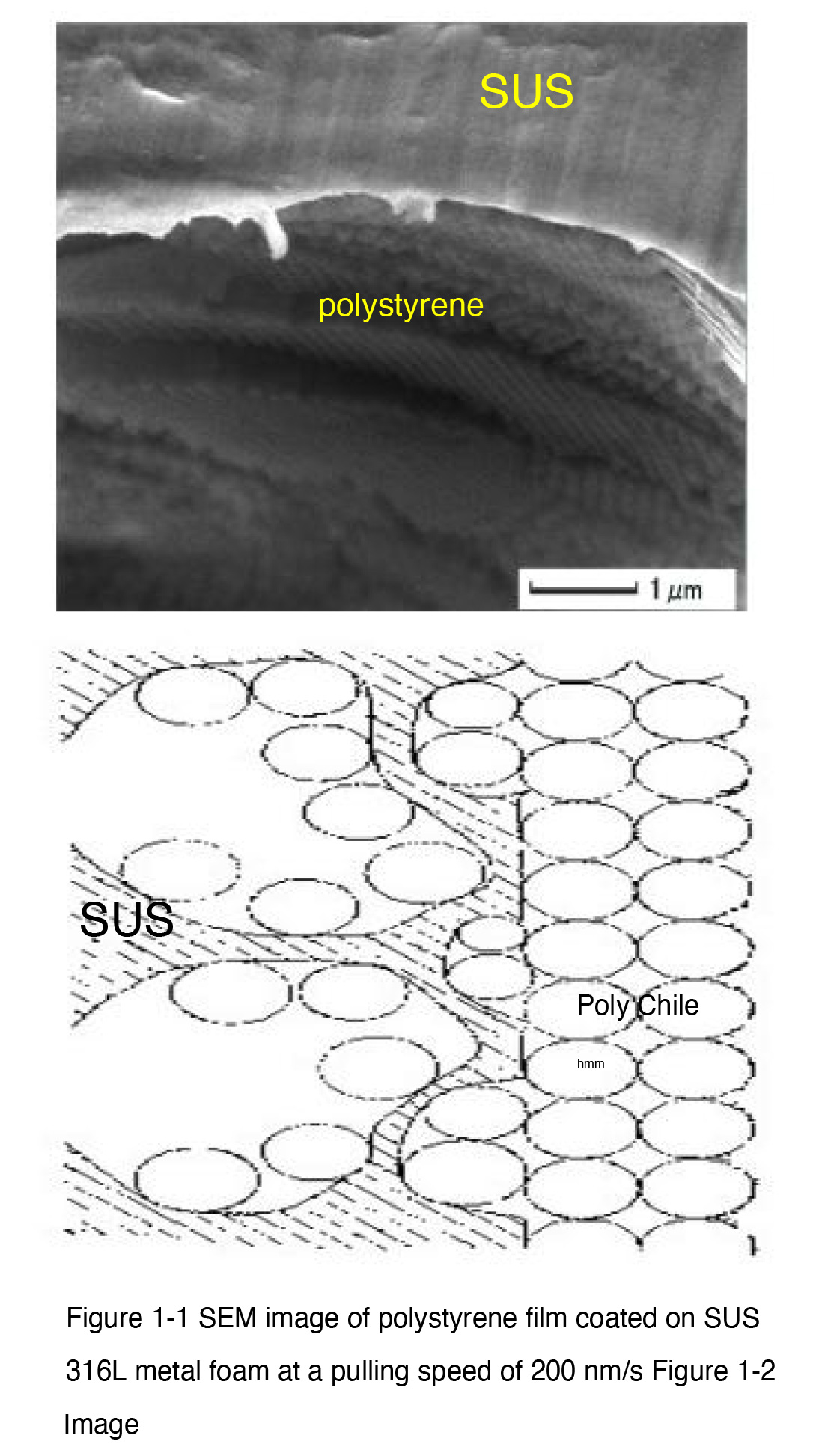
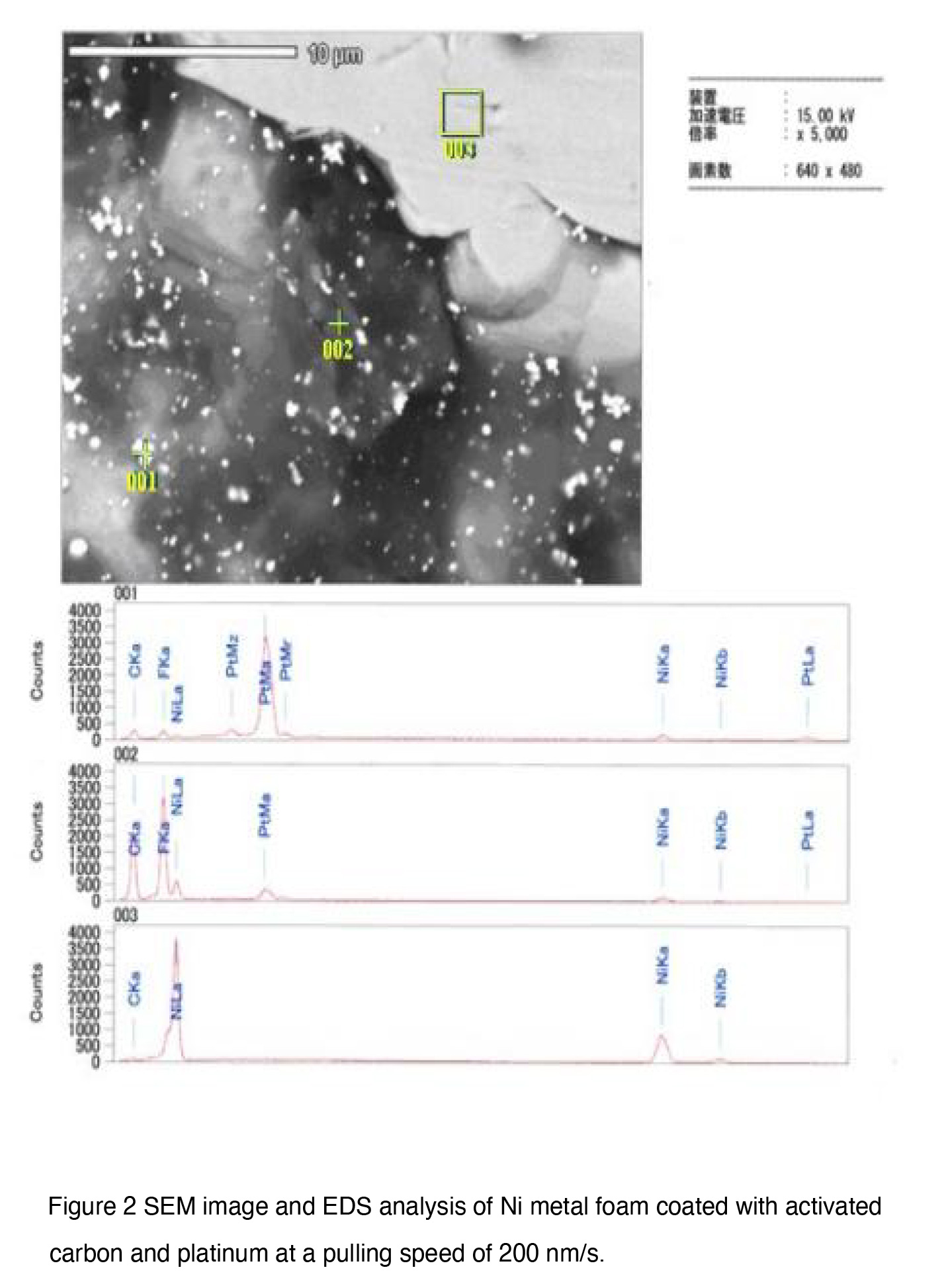
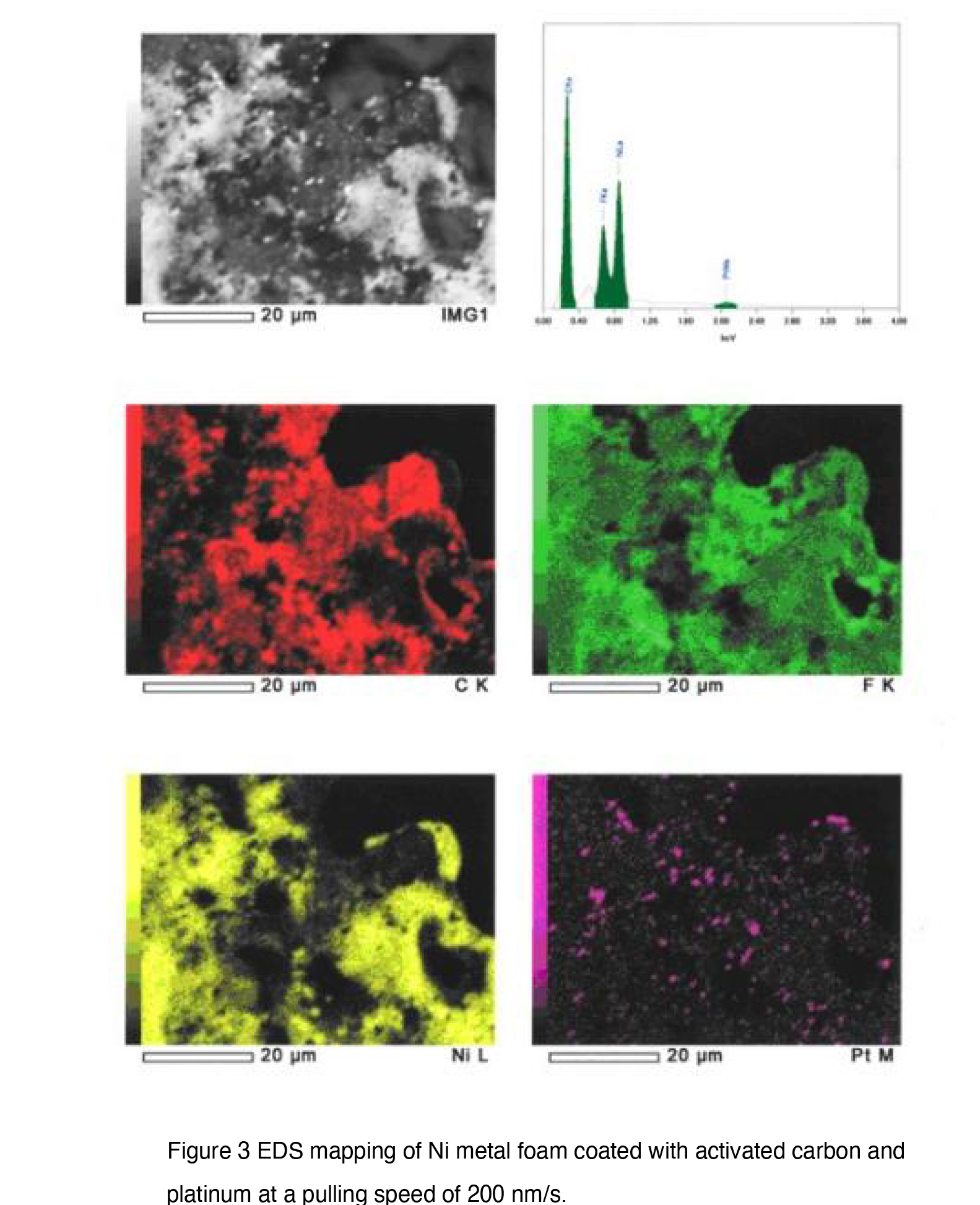
4.Conclusions
The Nano Dip Coater ND-0407 was found to be effective in producing a uniform thin film of fine particle layers on the surface and pore surface of metal foams with complex shapes.Since this method allows the film thickness to be adjusted by controlling the particle concentration in the solution and the substrate lifting speed, we will study the production of thin films with controlled thickness in the future, and also investigate the effects of the liquid composition and operating conditions to study the regular arrangement of different types of fine particles. In addition, we plan to start producing various types of foam materials by adopting various combinations of substrate materials and fine particles.
References
[1] Takeuchi, Akira, Properties and Application Technology of Porous Materials, Fuji Techno System 1999[2] Foam and Porous Materials Technology and Application Development, 1996
[3] K. Nagayama, et al., Langmuir, 12, 1303 (1996)
[4] DJ Norris, et al., Nature, 414, 289 (2001)
[5] Y. Xia, et al., Adv. Matter., 12, 693 (2000)
[6] Z. –Z. Gu et al., J. Am. Chem. Soc., 122, 10730 (2000) [7] Patent publication 2005-007298
 Japanease
Japanease English
English






